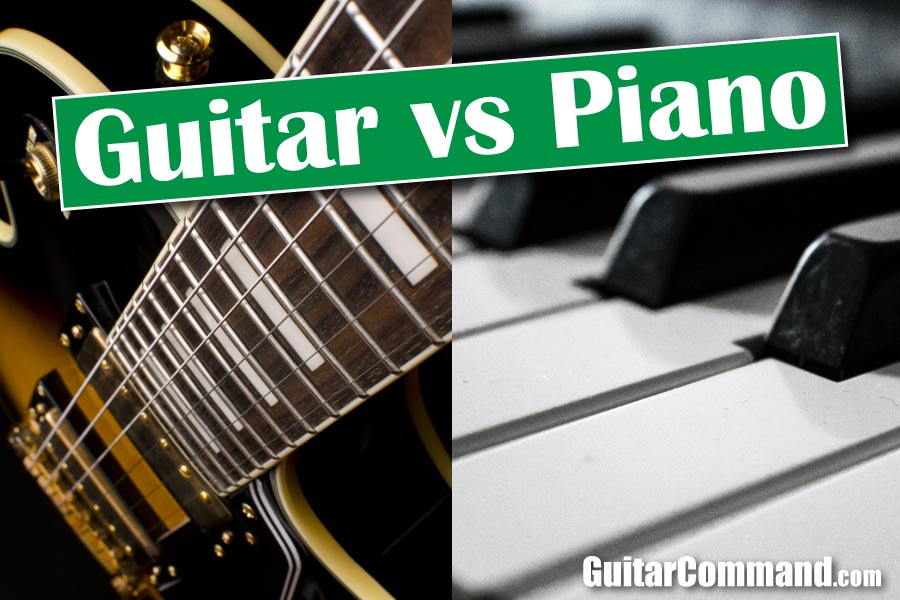Guitar vs piano: what are the differences between these two popular instruments, which is easier, and which one should you learn?
Read on to find out...
Introduction
This article has been written to help you if you are trying to decide whether to play guitar or piano.
Each instrument has its pros and cons, and your choice will depend not only on the sound of each instrument and the type of music you want to play, but also on practical considerations such as space, portability and price.
On this page we offer guidance on all of these factors and more. If you have any questions, feel free to ask them in the comments section!
Page Index
Guitar vs Piano Main Differences
Should I Learn Guitar Or Piano?
Guitar vs Piano: Solo Performance
Guitar And Piano Space Requirements
Below is a list of the main differences between guitar and piano. We compare the two instruments in more depth further down the page.
Guitar vs Piano Main Differences
- A guitar is a fretted, stringed instrument that is plucked either with the fingers or with a pick; a piano is a stringed keyboard instrument whose strings are struck by hammers operated by the keyboard.
- It takes two hands to play a note on the guitar: one to fret the note, the other to sound the string. On a piano, a note can be played by a single finger. (As a result, more notes can be played simultaneously on a piano than on a guitar.)
- A guitar is physically harder to play than a piano for beginners.
- Due to the ease with which notes can be played, the piano may be a slightly better instrument for kids to learn.
- Piano music (especially classical piano music) tends to be more complex, and therefore harder to play, than guitar music (once the basics have been mastered).
- The guitar has a smaller note range than a piano. (A piano can play notes both lower and higher in pitch than a guitar.)
- Both guitars and pianos are available in acoustic and electric forms.
- Most pianists learn to read music; some guitarists go through their entire careers without reading music!
- Tab – a means of representing music for fretted instruments – is available to guitarists who don’t read sheet music. Tabs for most popular songs are freely available on the web.
- Guitar lessons often cover improvisation. A piano teacher will typically concentrate on reading sheet music, technique, music theory and harmony.
- A guitar is smaller and lighter – and therefore much more portable – than a piano. Even a digital piano is heavier and more cumbersome than a guitar.
- A guitar takes up considerably less room in your home than a piano, and can be stored in a convenient place when not in use. Even a digital piano will take up significantly more room than a guitar.
- Guitars dominate rock and metal music. Bands in these genres often don’t have a piano or keyboard player. In other forms of popular music, both the guitar and the piano feature strongly. Keyboards dominate electronic dance music.
- Far more classical music has been written for the piano than for the guitar.
- The piano is a more versatile solo instrument.
- A guitar is much quieter than a piano. You’ll usually be able to play an acoustic guitar in an apartment without annoying the neighbors, whereas an acoustic piano will likely be clearly audible in adjoining apartments.
- The piano is capable of a greater range of dynamics.
- A guitar’s sound is more is more varied than that of a piano. The tone of an acoustic or classical guitar can be altered by picking the string in different ways and by using techniques such as vibrato. The only means a pianist has of modifying the sound of the piano is the use of the soft pedal.
- Most classical guitarists grow the fingernails of their plucking hand and have short nails on their fretting hands; most pianists have short nails on both hands.
- A guitar is significantly cheaper than an acoustic piano. Digital pianos are generally more expensive than beginner to intermediate guitars, but are cheaper than top-of-the-range guitars.
Should I Learn Guitar Or Piano?
- If you want to play rock, metal, or blues, learn the guitar.
- If you want to play classical music, learn the piano (unless you particularly love classical guitar music, in which case you should learn classical guitar).
- If you want to play jazz, then choose either guitar or piano, with the piano being a better choice if you want to play solo jazz (although guitarists such as Joe Pass prove that playing solo jazz is possible on guitar.)
- If you like folk and other traditional music such as bluegrass, then the guitar would be a better choice (also consider the violin).
- If you want to give solo performances, piano would be a better choice (but also consider classical guitar).
The differences between acoustic, electric and classical guitars are explained further down the page.
Music You Can Play On Guitar
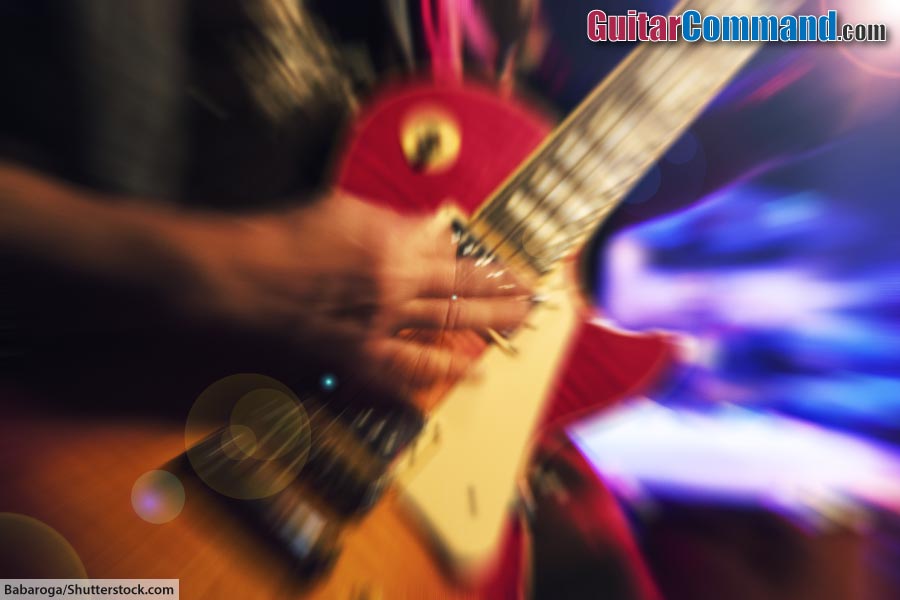
Electric and acoustic guitars are most often used to play rock and pop music. Hollow-bodied electric guitars are frequently used in jazz, while acoustic guitars are popular in folk and traditional musical styles.
The basic technique required to play an electric guitar is the same as that required to play an acoustic guitar. So, if you learn on an electric guitar, your skills could be transferred to an acoustic guitar (and vice versa).
Acoustic and electric guitar players place a considerable amount of importance on songwriting and improvisation. These areas are less-likely to be covered by piano students.
Rock and pop guitarists usually play in bands, and rarely give solo performances on their instruments.
You can find out more about the differences between electric and acoustic guitar on this page: Electric vs Acoustic Guitar
Rock and Pop vs Classical Guitar
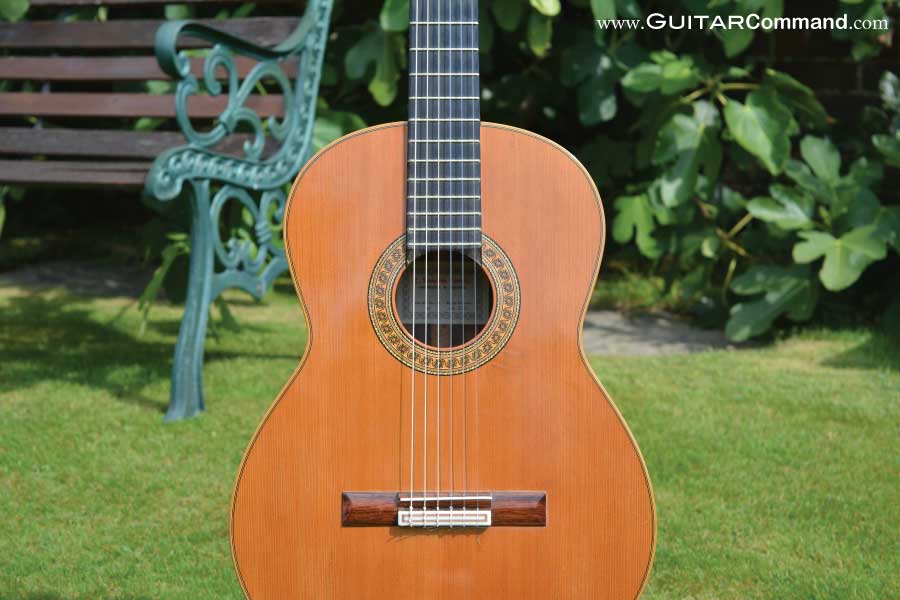
The classical guitar, as its name suggests, is typically used to perform classical music. This includes music written specifically for guitar, and transcriptions of music composed for other instruments. Classical guitarists usually learn how to read music, and usually perform solo.
Classical guitar requires a different technique to rock / pop guitar. Although there is some overlap between the two styles, the classical guitar can almost be considered to be a different instrument.
Piano Music Styles
The piano is used to perform music in a wide range of styles, from classical to rock n’ roll.
Some of the world’s greatest classical music was written for piano. Not only does the piano have a vast repertoire of its own, it can also be used to perform music written for other keyboard instruments, such as the harpsicord.
Most pianists learn how to read music. When learning piano, the emphasis is on playing music written by others. Jazz and rock/pop pianists, however, learn how to improvise and frequently perform music written by themselves. (Even if were to take formal piano lessons, you could also get some books on improvisation / composition, etc.)
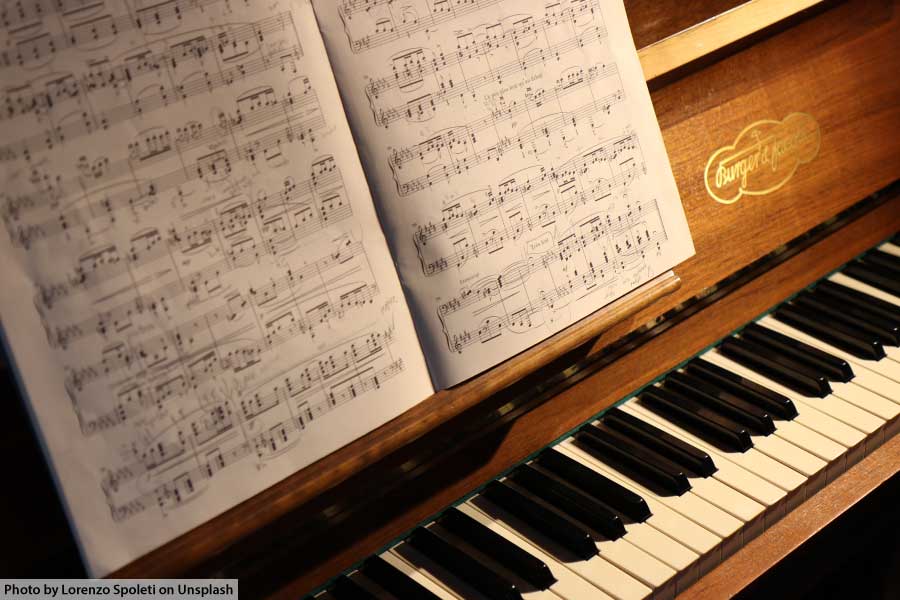
Knowledge of piano playing can be transferred to keyboards and synths, meaning that a pianist can play a vast range of musical styles, ranging from baroque harpsichord music to modern electronic dance music.
Although the piano and / or keyboards do feature in rock and metal, they are greatly overshadowed by the guitar in these genres. Additionally, the piano also doesn’t feature strongly in folk or other traditional music styles.
Guitar vs Piano: Playing
The physical act of playing notes and chords is harder on a guitar than it is on a piano. Beginner guitarists often experience sore fingertips and aching hands. (This will stop as your fingertips harden up.)
Playing a single note or chord on the guitar requires the use of both hands: one hand holds the string or strings down at the desired fret, while the other hand plucks or strums.
This requires a degree of coordination between hands and a fair amount of physical exertion to hold the string down hard enough to produce a clear note (this is what causes the sore fingertips).
Playing a note on a piano is as simple as pressing down a key. The physical exertion is minimal, and the finger and hand movements required to play a note are more natural than those required to play a note on guitar.
Pick vs Fingers
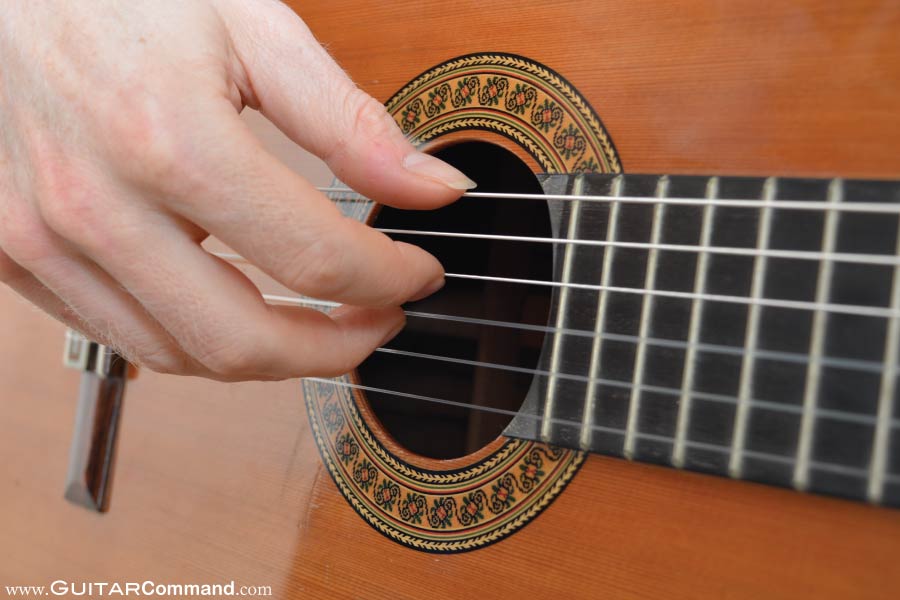
The strings of a guitar are plucked either with a pick (a small, triangular plastic device also known as a plectrum) or with the fingers.
- Playing with a pick results in louder, clearer notes, but gives you less control over which strings are sounded. It also limits your ability to play pieces with independent chord and melody parts.
- Playing the strings with the fingers is known as “fingerstyle”. It offers more control, but results in a quieter sound, especially if you haven’t got nails. Most rock and pop guitarists play with a pick. Most classical guitarists, and some acoustic guitarists, play fingerstyle.
Guitar vs Piano Difficulty
For a complete beginner, the guitar is physically harder to play than the piano; rather than simply pressing a key, a guitarist has to hold down a string with one hand and pluck it with the other. Strings have to be pressed down relatively hard, which can cause soreness at first.
The “instant gratification” of playing a piano makes it a slightly better instrument for young kids.
Once those initial physical difficulties have been overcome, it could be argued that the guitar is easier to play than the piano. This is because strumming chords, playing riffs and even improvising passable guitar solos are all (relatively) easy in comparison to playing a typical piano piece.
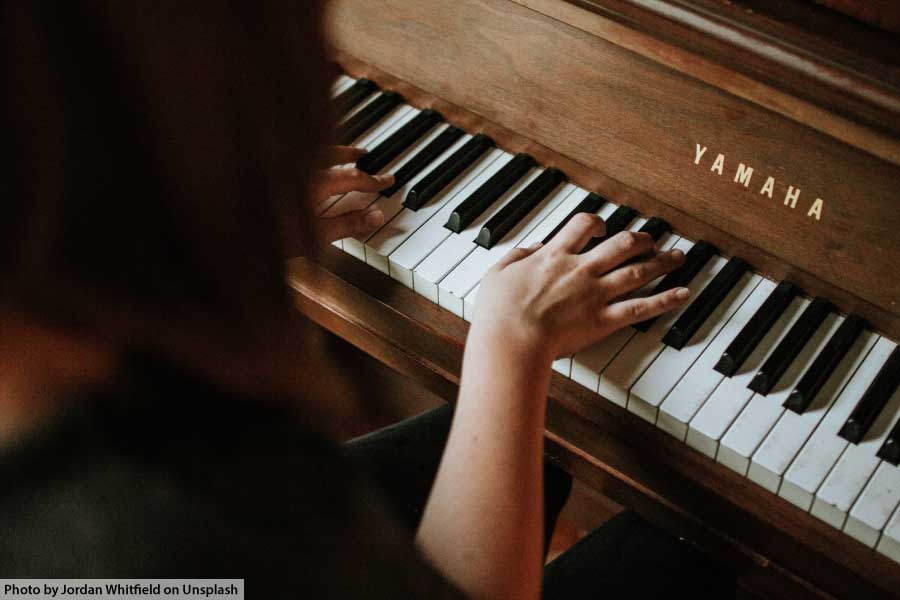
Most solo piano music requires the pianist to play a bass line, chords, and a melody line. In general, this is harder than playing the typical chord progressions, riffs and solos that a rock guitarist plays in a song.
Of course, there are exceptions: some guitar riffs and solos require a virtuoso-level of musicianship to play!
Learning the notes is easier on piano than on guitar; the sequence of white keys and black keys repeats up the keyboard, so once you know the notes of one octave, you know them everywhere!
The fretboard of a guitar is less easy to learn as there is less visual indication of which note is which. In addition, the same note (at the same octave) can often be played in different places on a guitar’s fretboard, which can be confusing!
Classical Guitar vs Piano Difficulty
Classical guitar is comparable in difficulty to classical piano. Whereas playing the classical guitar is arguably more physically demanding, music written for classical piano is, in general, more complex and correspondingly harder to perform.
Guitar And Piano Note Range
The range of a guitar is smaller than that of a piano, typically spanning just under four octaves compared to the piano’s seven-and-a-bit octaves.
The strings of a guitar are tuned to the following pitches, from low to high: E2, A2, D3, G3, B3, E4.
The lowest note of a guitar in standard tuning is E2 (the pitch of the lowest string); the highest note a guitar can play is B5 on a typical classical guitar; C6 on a standard acoustic guitar; and D6 on a standard, Stratocaster-style electric guitar.
The lowest note of a typical, 88-note piano keyboard is A0; the highest C8.
Guitar Vs Piano Tuning

A guitar has to be tuned every time it is played, and, in addition, will usually need to be re-tuned several times throughout a practice session or performance.
For most guitars, tuning is a simple process that typically takes under a minute (some electric guitars are fitted with locking tremolo systems, which add a minute or two to the tuning process).
Most guitarists invest in an electronic guitar tuner, a device that indicates whether a string is sharp or flat. A tuner is a worthwhile and relatively inexpensive investment.
A piano is typically tuned once or twice a year. A piano used for professional recording or concerts will be tuned far more frequently – perhaps before each session.
Tuning a piano is a far more complex procedure than tuning a guitar, and nearly all pianists employ the use of a professional piano tuner. The price for piano tuning varies considerably from region to region; a ballpark figure might be from $130 to $230.
Another benefit of the guitar is that melodies and chords can easily be transposed into different keys simply by moving the fretting hand up or down the guitar neck.
For example, the chord shape used to play an A major chord can often be moved down two frets to play a G major chord; only one chord needs to be learned!
On guitar, whole songs can be transposed with the use of a capo, a mechanical device that clamps all the strings down on the fretboard at a certain fret.
Guitar vs Piano: Solo Performance
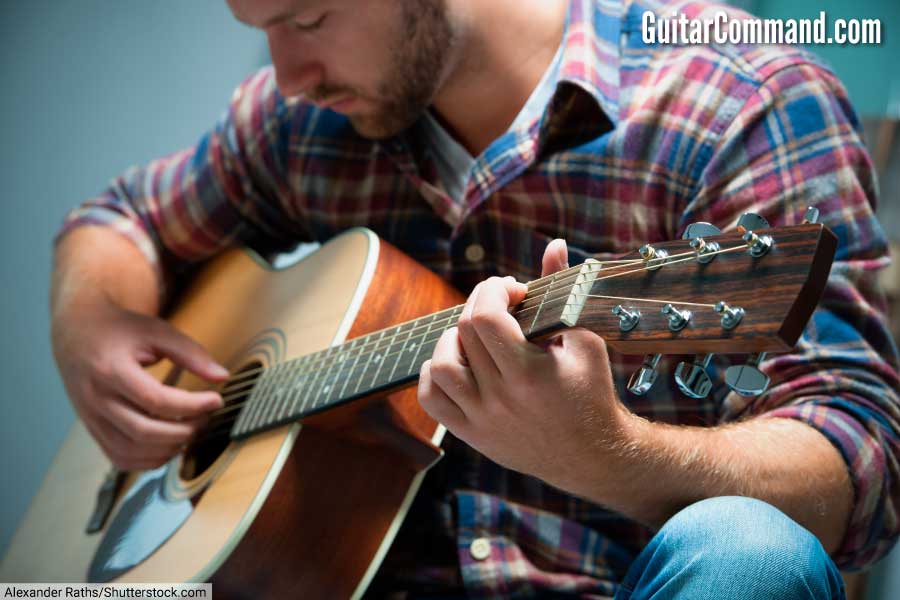
Which is the best instrument for a musician wishing to give solo performances: guitar or piano?
It is possible to give solo performances on either a guitar or piano, but the piano is a more capable solo instrument due to its greater range, and the fact that the left and right hands can play independently of one another.
Both guitar and piano are polyphonic (capable of producing more than one note at a time). This means that a single performer can play multiple parts (e.g., a melody line and a chordal accompaniment) at the same time.
Although there are many pieces written for solo performance by monophonic instruments such as the flute and trumpet, a polyphonic instrument gives a performer far more scope for creating multi-layered music capable of holding a listener’s attention.
The piano is one of the best instruments of all for performing solo pieces. In general, the right hand plays melody lines, while the left hand provides accompaniment in the shape of chords and arpeggios. (In reality, neither hand has a strict role, and both are used to play a mixture of lead and accompaniment parts.)
The guitar, too, is polyphonic. However, when played with a pick, the instrument is limited to either playing either chords or a melody line, rather than both at the same time.
Even when played fingerstyle (also known as “fingerpicking”), a guitar can’t compete with a piano in terms of playing multi-layered music.
The guitar is limited to a realistic maximum of four notes being played at the same time, unless the strings are strummed, in which case chords containing a maximum of six notes are possible. (The little finger, or pinky, of the plucking hand is rarely used by guitarists.)
Different Types of Guitar
There are several different types of guitar. Below, we compare each to a piano.
Acoustic Guitar vs Piano
An acoustic guitar is strung with steel strings, and typically played with a pick, although fingers can also be used in order to play more intricate, multi-layered music.
An acoustic guitar is often strummed to accompany a singer, or as part of an acoustic group. A piano can be used to perform both of these roles, but lacks the rhythmic feel of a strummed acoustic guitar.
An acoustic guitar is louder than a classical guitar, and produces a brighter, more metallic sound. However, it is not as loud as a piano.
You can play solo pieces on an acoustic guitar, but the instrument is very quiet, even if you have fingernails on your plucking hand (which make the plucked notes louder and clearer).
Solo pieces for the acoustic guitar tend to be folky / traditional in nature; playing classical guitar pieces on an acoustic guitar is difficult due to the less forgiving steel strings, and, frankly, doesn’t sound great.
You can find out more about the acoustic guitar on these pages:
Classical Guitar vs Piano
A classical guitar, also known as a Spanish guitar, is strung with nylon strings and produces a soft, expressive sound. It is a very quiet instrument, best suited to intimate venues rather than big halls.
Because the classical guitar is played with the fingers, rather than with a pick, a degree of polyphony is available.
Classical guitarists usually grow the fingernails of their “plucking” hand to produce loud, clear tones.
This reliance on long nails can be problematic; it’s difficult to play well with a broken fingernail, and nails can break just before performances and take several weeks to grow back.
The classical guitar, as its name suggests, is typically used to perform classical music. This includes music written specifically for guitar by composers such as Fernando Sor and Mauro Giuliani; transcriptions of lute music by composers such as Sylvius Leopold Weiss and John Dowland; and transcriptions of music composed for other instruments by composers such as J.S. Bach and Isaac Albéniz.
The classical guitar is also used in the slightly less-formal flamenco, and in popular music when a Spanish or Latin sound is required.
The amount of music written for the piano far surpasses that written for the classical guitar. The world’s greatest composers, including Beethoven, Mozart, Brahms, Chopin, and Schumann – to name but a few – have all composed music for the piano (or earlier, piano-like instruments).
Music written for other keyboard instruments, such as the harpsichord, by composers such as J.S. Bach and Handel can also be played on piano.
If you want to play classical music by the greatest composers of the Baroque period onwards, then – if you have the space in your home – the piano may be a better choice than classical guitar.
If you love lute music, want a more portable instrument, or simply love the sound of classical guitar music, then classical guitar would be the better choice.
You can find out more about the classical guitar on this page: How To Play Spanish Guitar
Electric Guitar vs Piano
The electric guitar is used in most genres of popular music, from jazz to metal. Most electric guitarists play with a pick, and a therefore limited to playing either single-note lines or chords. Electric guitars are rarely played fingerstyle.
The electric guitar is physically the easiest of all guitars to play. Minimal effort is required to play notes, and even barre chords are manageable after a few weeks of practice.
The electric guitar is used to play rock and pop music, while the piano is typically used to play classical and pop music.
If you want to play rock and metal, you’ll be looking at the electric guitar. If you want to play pop music, then either instrument will be suitable, and the sound and portability of each instrument should be considered. For playing classical music, see the classical guitar vs piano section, above.
You can find out more about electric guitars on the following pages:
Bass Guitar
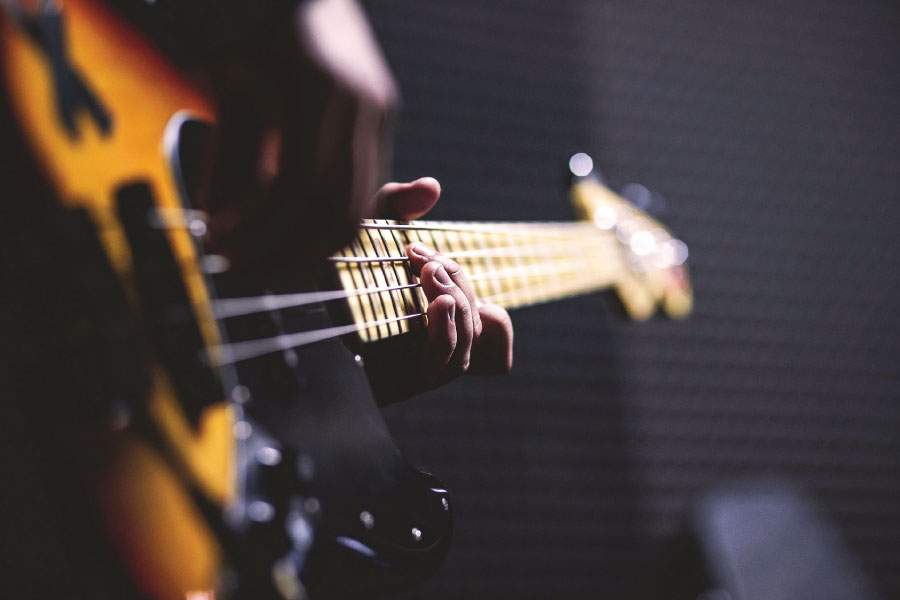
The bass guitar is a specialized type of guitar that produces low tones (it is tuned an octave lower than a normal guitar). It was invented as an alternative to the upright bass. Being a specialist instrument, it is less versatile than either the guitar or the piano. Despite this, it is a rewarding and enjoyable instrument to play.
You can find more information on the bass guitar and playing the bass on the following pages:
Different Types of Piano
There are two main types of piano: upright and grand. An upright piano, despite being the smaller and less expensive of the two, will still take up most of the wall in an average-sized room, and, if bought new, will set you back several thousand dollars.
You’ll need a lot of space, and a deep wallet, if you want a grand piano. The improvement in sound and volume may be worth it for a professional, but for most pianists, an upright is more than sufficient.
Digital Pianos
A digital piano is a great option if you lack the space, cash, or understanding neighbors required for an acoustic piano.
Many digital pianos have full-sized keys and a realistic feel, which means that you’ll be able to transfer your skills to an acoustic piano with no problems.
With a digital piano you have the option of turning down the volume, or even playing with headphones.
A digital piano also takes up less room than an upright piano, and is relatively portable; like your guitarist friends, you’ll be able to transport your instrument to rehearsals and gigs.
Guitar vs Piano Cost
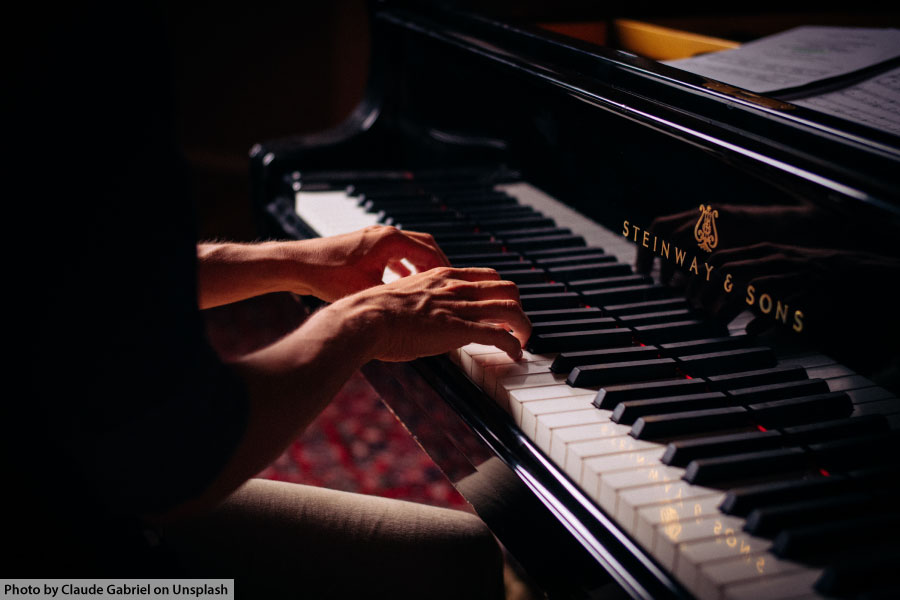
Bought new, a guitar is cheaper than a piano. From beginner right through to professional level, a guitar will be less expensive than the corresponding piano.
A decent beginner electric or acoustic guitar costs around $250 to $400; a “beginner” upright piano will cost at least 15 to 20 times that. A top of the line acoustic guitar will set you back say, $3,000; a top of the range grand piano will cost as much as (or more than) a luxury car.
Classical guitars are, in general, slightly more expensive than their electric and acoustic equivalents, but still significantly cheaper than a piano of the same quality.
Electric pianos are available at wide range of price points. Expect to pay around $600-700 for a decent student model.
Price needn’t be a limiting factor in your decision, as guitars and pianos are both available second-hand.
Pianos are frequently advertised “free to a good home”, so if you are prepared to stump up for transport and some light restoration, you might get yourself a bargain.
You can find out more about the price of electric guitars on this page: How Much Is An Electric Guitar?
Guitar vs Piano Space Requirements
A guitar is a mid-sized instrument, larger than a flute or clarinet, but smaller and more portable than a ‘cello, upright bass or drum kit. It is easily carried, and will fit in the trunk of most cars.
An acoustic piano takes up far more space than a guitar. An upright acoustic piano will dominate a small room, and even a digital piano will take up significantly more room than a guitar.
Only consider a grand piano if you can spare much of a decently-sized room and have good sound proofing!
A piano is nearly always played seated, and it is traditional (and practical) to use a piano bench. This adds to the space required by either an acoustic or digital piano.
- A Yamaha B1, a compact upright acoustic piano, has the following dimensions: width: 148 cm (59"); height: 109 cm (43”); depth: 54 cm (22”), and weighs 174kg (384 lb).
- The Yamaha’s C2X, a grand piano, has the following dimensions: width: 149 cm (59"); height: 101 cm (40"); depth: 161 cm (5'3"), and weighs 290 kg (638lbs).
In a nutshell, acoustic pianos are not portable. You’ll have difficulty moving an upright piano from room to room in your home, let alone between different buildings. Most people employ the use of specialist piano movers to transport their instruments.
A digital piano is a far better option than an acoustic piano if you wish to play with a band or perform solo gigs.
However, even a digital piano takes up considerably more room, and is less portable, than a guitar.
Conclusion
We hope that this article has been useful in helping you reach a decision over whether to learn guitar or piano.
Both instruments can be used in many genres of music, and either instrument has the potential of being a source of lifetime enjoyment.
Practical considerations such as space and price are important, but most obstacles can be overcome, and which instrument you choose to learn should ultimately be a matter of personal preference. We wish you good luck in your musical journey!

